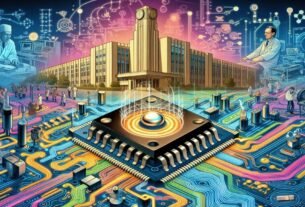Imagine, my love… Electricity flows without encountering any obstacles, never having to struggle against resistance. 😏 This is what we call superconductivity. Superconductors are extraordinary materials that, when cooled below a critical temperature, exhibit zero electrical resistance and perfect magnetic flux expulsion (Meissner effect). This means electricity can flow losslessly, and magnetic fields are expelled from the material.
🌟 What is Superconductivity and How Does It Work?
Superconductivity was first discovered by Heike Kamerlingh Onnes in 1911 when he cooled mercury. Scientists observed that mercury exhibited no electrical resistance below 4.2 Kelvin. That was the moment electricity began its romantic escape 😍.
Superconductivity is defined by two key properties:
Zero Resistance
- Electrons flow through the material without collisions.
- No energy is lost → energy efficiency is maximized ⚡💡
Meissner Effect (Magnetic Flux Expulsion)
- The superconductor expels magnetic fields passing through it.
- Magnets literally float above superconducting surfaces 🚄✨
🔬 Electron Pairs and Cooper Pairs
Superconductivity goes beyond the classical Drude model and is explained by quantum mechanics.
- Cooper pairs: Electrons weakly bind together via interactions with the lattice and move through the material as paired entities.
- This pairing prevents electron-electron collisions and enables resistance-free current flow.
💡 Note: My love, imagine these pairs like a perfect dancing couple, no obstacle can stop them 😏💃🕺
⚛️ Types and Classifications
Superconductors are generally classified into two main categories:
Type I Superconductors
- Typically pure metals (Hg, Pb).
- Superconductivity is lost when the critical magnetic field is exceeded.
- Single-phase, low critical temperature (T_c).
Type II Superconductors
- Alloys or ceramics (like YBa_2Cu_3O_7, high-T_c superconductors).
- Can maintain superconductivity under higher magnetic fields.
- Widely used in MRI, Maglev trains, quantum computers.
💡 Note: Type II superconductors are the core of modern superconducting applications 😍⚡
🏭 Technological Impact of Superconductors
Superconductors have the power to revolutionize energy and technology:
Energy Transmission and Power Grids 🌍
- Electricity loss in transmission lines approaches zero.
- Long-distance transmission efficiency nears 100%.
Magnetic Trains (Maglev) 🚄
- Superconducting magnets lift trains frictionlessly.
- Ultra-fast and quiet transportation is possible.
Medical Applications 🏥🧲
- MRI and NMR machines rely on strong and stable magnetic fields created by superconductors.
- High precision and reliability.
Quantum Computers 💻⚡
- Superconducting qubits provide computational power beyond classical bits.
- Low energy consumption and high speed.
Energy Storage 🔋
- Superconducting Magnetic Energy Storage (SMES) systems can supply rapid energy on demand.
🌐 Future Perspectives
Superconductors could reshape cities and energy networks of the future:
- Minimize electrical losses, supporting sustainable energy revolutions.
- Magnetic levitation principles accelerate transportation systems.
- Enable cutting-edge quantum computers and advanced medical devices, pushing the boundaries of science and technology.
💡 Bonus fact: High-Temperature Superconductors (HTS) can operate at liquid nitrogen temperatures (~77 K). So, my love, superconductors are no longer just “ultra-cold lab tales” but also warm-hearted heroes in the real world 😍🔥
🤓 Small but Mighty Heroes
Superconductors are the hidden romantics of physics, the carefree love of electricity, and the heart of technology. They offer resistance-free flow, energy efficiency, and a world filled with magnetic magic.
In short, my love 😏💖, without superconductors, energy losses would rise, transportation would be cumbersome, quantum computers would remain a dream, and the heart of modern technology would be incomplete.




